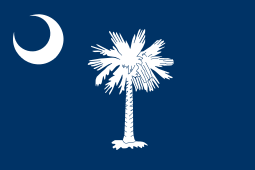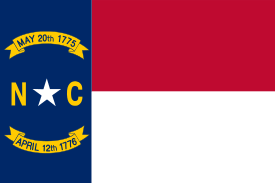Interstate 3
| |
|---|---|
| Major junctions | |
| South end: | Savannah, Georgia |
| North end: | Knoxville, Tennessee |
| Highway system | |
Interstate 3 (I-3), the Third Infantry Division Highway, is a proposed Interstate Highway in the United States to run from Savannah, Georgia, north to Augusta, Georgia, and Knoxville, Tennessee. The roadway was proposed in the same federal highway measure that gave birth to a proposal for I-14.
History

In 2005, the Safe, Accountable, Flexible, Efficient Transportation Equity Act: A Legacy for Users (SAFETEA-LU) was signed into law by then-President George W. Bush. The act included the proposed corridors for the planned I-14 (specifically as the 14th Amendment Highway), and I-3 (as the 3rd Infantry Division Highway). The legislation did not provide the official numbering, nor did it provide funding for the highways.
The proposed numbering of the highway does not follow the pattern of the existing Interstate Highway grid but is noted to salute and honor the Third Infantry Division of the United States Army, based at Fort Stewart, near Savannah, Georgia.
According to the Georgia Department of Transportation, the existing Savannah River Parkway, which carries the designations SR 555 and SR 565, is open to traffic. It begins just northwest of Savannah at the intersection of I-95 and SR 21/SR 30. It travels northwesterly along SR 21, paralleling the Savannah River, to Millen, where it meets US 25. From Millen, the roadway follows US 25 to I-520 in Augusta. A western branch of the Savannah River Parkway travels from I-16 south of Statesboro north and northwestward (following US 25) to meet the main parkway roadway in Millen.
The proposal currently faces local opposition from groups concerned about the environmental impact of the Interstate Highway. No date for construction of the highway has been set. The federal government began a study of the proposed route in July 2010.[1] In early 2012, the Federal Highway Administration released a report to the United States Congress noting the potential financial and environmental costs of the highway as well as the public opposition.[2]
Route description
The actual final route of I-3 is unknown. However, the 2005 SAFETEA-LU legislation indicated that in Georgia, I-3 would follow the existing Savannah River Parkway from Savannah to Augusta.
Due to the difficulties of building a new highway through the Appalachian Mountains, the highway's proposed route north of Augusta is less clear.[3] In early 2008, officials introduced the possibility of routing I-3 through Greenwood, South Carolina and continuing on to Greenville.[4] Other potential routes continue in Georgia along US 441, US 129 (along the Dragon, an 11-mile-long (18 km) stretch of road in North Carolina and Tennessee adjoining the Great Smoky Mountains National Park with 318 curves), or SR 77.[2]
The proposed numbering of the highway does not fit within the usual conventions of the existing Interstate Highway grid, where primary north-south highways are assigned odd numbers, and such even route numbers increase from west to east. Under the normal Interstate Highway grid, I-3 should instead be located on the West Coast between the Pacific Ocean and I-5.
See also
-
.svg.png) Georgia (U.S. state) portal
Georgia (U.S. state) portal -
 South Carolina portal
South Carolina portal -
 North Carolina portal
North Carolina portal -
 Tennessee portal
Tennessee portal -
 U.S. Roads portal
U.S. Roads portal - Central Savannah River Area
References
- ↑ "Feds eyeing possible interstate through Tenn., Ga.". The Daily Times. Associated Press. August 22, 2010. Retrieved August 23, 2010.
- 1 2 "Third Infantry Division Highway Corridor Study: Report to Congress". Office of Planning, Environment, and Realty, Federal Highway Administration. Retrieved May 6, 2012.
- ↑ "U.S. DOT - Study Alignments and Design Levels Draft Technical Memorandum: Appendix A: Preliminary Corridors". Retrieved October 4, 2014.
- ↑ "Opponents of interstate hope for alternate route". Athens Banner-Herald. January 2, 2008. Retrieved August 30, 2015.
External links
-
 Media related to Interstate 3 at Wikimedia Commons
Media related to Interstate 3 at Wikimedia Commons - 2005 SAFETEA-LU legislation, from the Library of Congress
- Third Infantry Division Highway Corridor Study
- U.S. DOT - 3rd Infantry Division Highway Corridor Study: Third Meeting of the Expert Working Group
- Georgia DOT - Savannah River Parkway description
- Interstate Guide Proposed Interstates: I-3
- I-3 on The Virginia Highways Project's NCRoads.com Annex
.svg.png)